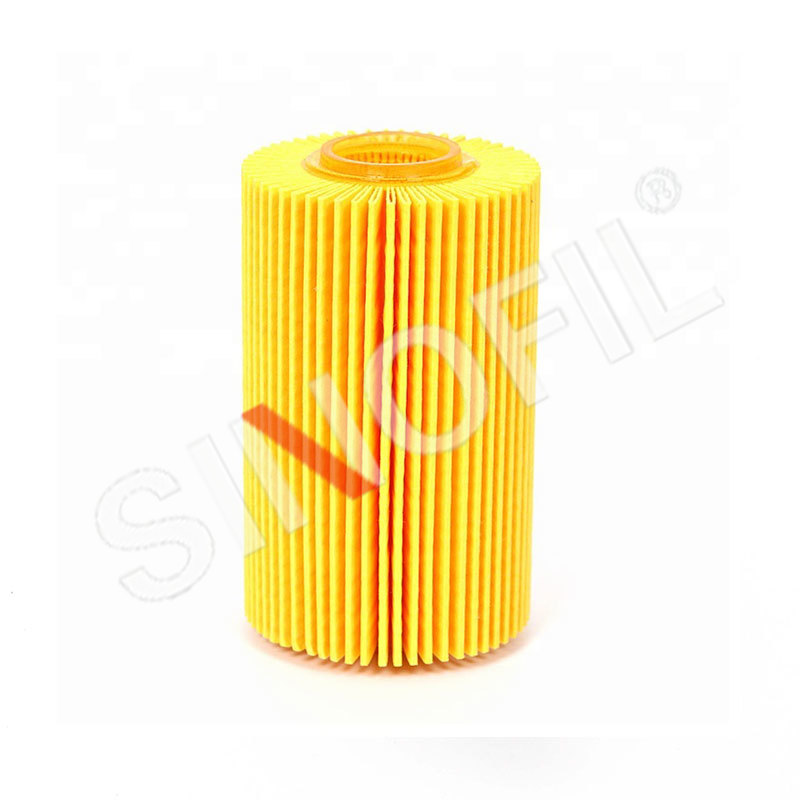Home / News / How to prevent premature wear or damage of cartridge oil filters?
Preventing premature wear or damage of cartridge oil filters is essential to ensure the longevity and optimal performance of both the filter and the engine. Here are several key strategies and best practices to follow:
Ensure Compatibility: Always use a cartridge oil filter that is specifically designed for your engine's make and model. Using an incompatible filter can lead to improper sealing, leaks, or inadequate filtration, which can cause early failure.Check OEM Recommendations: Follow the manufacturer's specifications (OEM) for the recommended filter type, size, and filtration capacity.
Follow the Maintenance Schedule: Replace the cartridge oil filter according to the manufacturer’s recommended interval, which is often based on mileage or time. Neglecting to replace the filter regularly can cause it to become clogged, reducing oil flow and leading to engine wear.Consider Driving Conditions: If you drive in harsh conditions (e.g., dusty environments, extreme heat, frequent stop-and-go traffic), replace the filter more frequently, as the engine will produce more contaminants that the filter needs to capture.
Use Correct Tools: When installing a cartridge oil filter, use the appropriate tools to ensure it is fitted correctly without over-tightening or under-tightening, both of which can cause damage or leaks.Lubricate Seals: Before installing, apply a small amount of clean engine oil to the rubber seal (O-ring) on the filter. This helps create a better seal and prevents damage during installation.Avoid Over-Tightening: Over-tightening the filter can damage the seal and threads, leading to leaks or cracks in the filter casing. Always follow the torque specifications provided by the manufacturer.
Follow Oil Specifications: Always use the engine oil recommended by the manufacturer, as using the wrong type of oil can lead to increased contaminants and faster filter clogging.Maintain Proper Oil Levels: Ensure that the engine has the correct oil level. Insufficient oil can cause the filter to work harder, while overfilling can increase pressure and cause leaks or damage to the filter.

Avoid Contaminated Oil: Use clean, fresh oil during oil changes. Contaminated or old oil can introduce particles into the engine, overwhelming the filter and causing early wear or damage.
Flush the Engine: In cases of heavy engine sludge or contamination, it may be necessary to flush the engine before installing a new filter to prevent premature clogging.
Inspect the Filter for Damage: Before installation, check the cartridge oil filter for any visible damage, such as dents, cracks, or defects in the seal. A damaged filter can lead to oil leaks or reduced filtration.Inspect O-Rings and Seals: During an oil change, always inspect the O-rings, gaskets, and seals for wear or damage. Replace them as needed to ensure a proper seal and prevent leaks.
Watch for Oil Pressure Changes: After installing a new filter, monitor the oil pressure gauge. A sudden drop or spike in oil pressure can indicate a problem with the filter, such as clogging or improper installation.Address Pressure Issues Promptly: If oil pressure issues arise, it is essential to stop driving and investigate the cause, as continued driving can damage the engine or filter.
Limit Idling Time: Prolonged idling can cause the engine oil to break down more quickly, leading to increased contaminants that will clog the filter faster. Limiting idle time can help preserve the filter's life.Extreme Temperature Protection: In extreme temperatures (very hot or very cold), ensure that the filter is rated for such conditions. Some filters may degrade more quickly if they are not designed for extreme environments.
Ensure the Filter Has a Bypass Valve: Many cartridge oil filters have a built-in bypass valve that allows oil to flow even when the filter is clogged. This prevents engine oil starvation but should not be relied on for long periods.Test the Valve: During regular maintenance, ensure that the bypass valve is functioning correctly, as a stuck valve can lead to filter failure or engine damage.
By following these best practices, you can minimize the risk of premature wear or damage to cartridge oil filters, ensuring your engine continues to run smoothly and efficiently.



 English
English Español
Español











 ++86 183 3391 1399
++86 183 3391 1399


 +86 183 3391 1399
+86 183 3391 1399
 +86 187 3296 0060
+86 187 3296 0060 Wangshigong Village, Wei County, Xingtai City, Hebei Province, China
Wangshigong Village, Wei County, Xingtai City, Hebei Province, China
